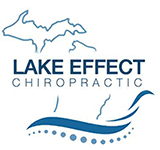
How do you know if “that pain” in your body is actually sciatica?
You may have heard other people talking about it, done a quick search on Google and maybe even diagnosed yourself with it.
But do you really have sciatica? Let’s talk about it.
What Is Sciatica?
Sciatica is pain that radiates down your leg along the path of the sciatic nerve, which runs from your lower back to your hips and buttocks. Sciatica usually affects only one side of the body.
Sciatica, known medically as lumbar radiculopathy, is can be extremely painful and debilitating to live with. Unfortunately, sciatica is a fairly common condition, with between 10-40% of the population being affected by it at some point in their lives.
The pain that is associated with sciatica is caused by a spinal disc compressing on of the nerves that reside at the base of your spine. The nerve gets trapped and it sends a signal to your brain that gets interpreted as pain. You may also feel numbness or tingling down the back if your leg. This can trigger muscle tightness, which can lead to muscle adhesions, which can lead to a nerve entrapment, which can create long lasting nerve pain.
Causes of Sciatica
There are several different causes of sciatica. The most common cause is a herniated or slipped disc in your spine that results in one of your nerve roots getting compressed. Slipped discs occur when the gel-like center of the disc begins to bulge out of the walls of the vertebrae.
Sciatica can also be caused by degenerative disc disease, which is caused by wear and tear on the vertebrae of your spine. This disease can result in spinal stenosis (narrowing of the spinal cord), which traps your sciatic nerve.
Amongst the most common causes of sciatica is osteoarthritis, a condition where the bones and cartilage wear away. If this occurs in the spine, it can lead to sciatica.
If there is trauma to the sciatic nerve or lumbar spine, or tumors are present, you may also experience pain and numbness in the area.
Signs and Symptoms of Sciatica
The main symptoms of sciatica include:
- Pain that begins in your lower back and radiates down one leg weakness in one or both legs
- Tingling or pins and needles in your foot
- Numbness in one leg
- Loss of bladder and/or bowel control (contact emergency services if this occurs)
Diagnosing Sciatica
To begin with, your doctor will run through your symptoms. They will ask you if you’re getting any pain, numbness, or weakness in your legs, and how severe each of these symptoms is.
Next, your doctor will most likely perform a physical exam to determine which nerve is causing your symptoms. They may ask you to squat, walk, lung, or raise one leg while lying on your back.
If after conservative trial based care, the doctor suspects a more serious diagnosis, you may be required to go for a CT or MRI scan if the pain or symptoms do not change.
Treatments for Sciatica at Lake Effect Chiropractic
Chiropractic Adjustments: The goal of a chiropractic adjustment is to mobilize the joint fixation to increase the range of motion, reduce nerve irritability, and improve mobility.
PulStar (low force chiropractic adjustments): If you are uncomfortable with the more traditional manual adjustments, the PulStar is an amazing option for light force, gentle chiropractic adjustments. Also, if you are experiencing extreme levels of pain this is a great tool to use in the early phases of recovery.
Active Release Technique: Active Release Technique (ART) is a soft tissue therapy designed to rid injured areas of scar tissue.
Instrument Assisted Soft Tissue Manipulation (IASTM): Graston/ FAKTR- The goal is to trigger an inflammatory healing response. This will stimulate the production of new collagen and proper, functional, pain-free healing.
Therapeutic Exercise: Different but specific exercises will be given at the proper time to support your care, from early acute pain care through maintenance and wellness care.
Class IV Medical Laser: Improved healing time, pain reduction, increased blood circulation and decreased swelling are the major effects of laser energy. Summus Medical Lasers are designed to treat pain and accelerate the healing process.
McKenzie Method (MDT): The McKenzie method is a standardized assessment tool, defining and classifying movement problems and recommending appropriate treatment. More simply, if applicable we teach you to continue treatment at home between visits!
This condition can clear up by itself but it may persist for months if untreated. Although many doctors prescribe rest, this can often leave you in more pain and discomfort. In our office we will get you moving to help promote healing and pain reduction.
What To Do If You Think You Have Sciatica
This is an important question to ask and to answer!
CALL US at (989) 686-6808 and schedule your exam and treatment all on your first visit! We want to FIX THE CAUSE of your pain and be sure to not just cover up the symptoms.
Chiropractic care can be tailored to many scenarios of traveling or radiating leg pain. Whether it’s acute pain, angry and very flared up, or it is more chronic pain and you’ve been dealing with it for years, chiropractic is applicable!
It excites us to have new patients who have had other chiropractic experiences, what we do at Lake Effect Chiropractic is target the source of the problem and try to extinguish it! Getting the body moving, from the joints to the muscles, we find MOVEMENT IS MEDICINE!
Even though leg pain is fairly common, the level of severity and the conditions responsible differ. What we do is different, your treatment is always individualized and we are here to help.
We work together with the medical community to make sure you receive the proper care no matter what your condition may be, new or old, minor or serious, we want you to get back to a pain free life and enjoy it!
Here are some of the treatment options that may be offered by your primary care provider (PCP):
- Prescription medications to relieve pain and reduce inflammation. This is most helpful for an immediate and temporary reduction of pain.
- Physical therapy to stabilize movement. Your physical therapist may prescribe a range of exercises, including walking, swimming, and stretching or stability movements. This can requrire a siziable investment of time and money.
- In more severe instances, after failed conservative chiropractic and physical therapy, spinal injections of corticosteroid can be give to reduce pain and swelling around the affected nerves. The number of injections you need will depend on your individual circumstances. Recognize these are designed to be SHORT TERM fixes. We will refer to get steroids if the pain is so extream that tolerating any movement seems impossible. However combining chiropractic with the “fire extinguisher” will help get to a healed/ fixed/ corrected state! A bandaid will eventually come off!
